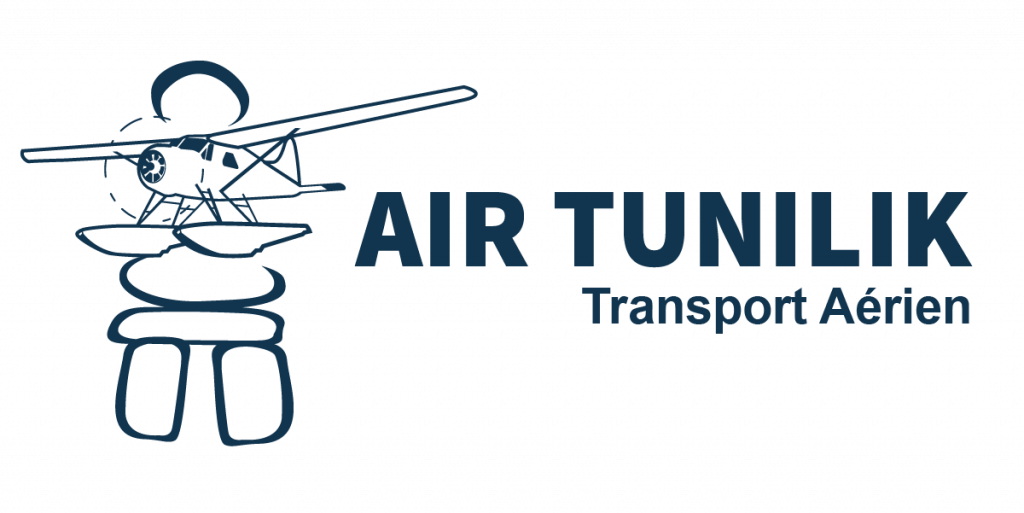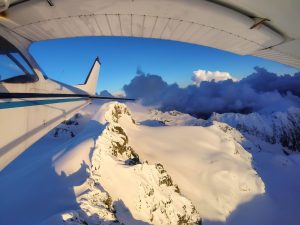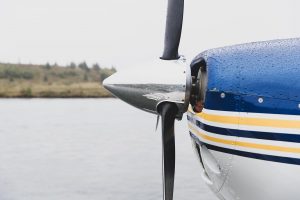The unique geography and natural diversity of Quebec make it the ideal place for any canoe and kayak enthusiast, regardless of skill levels. Thanks to its center-stage location in the Canadian Shield region, rivers and lakes in Quebec are numerous and come in all shapes and sizes.
What are the best canoe trips in Quebec?
The best canoe trips in Quebec are:
- The Bonaventure River
- La Mauricie National Park
- The Jacques-Cartier River
- Mont-Tremblant National Park
- La Vérendrye Wildlife Reserve
- The Moisie River
- The Malbaie River
- The Rouge River
- Nunavik
1. The Bonaventure River
The Bonaventure River flows from Lake Bonaventure, located on the Appalachian mountain range, to Baie des Chaleurs. Its length covers 126 km of the Gaspé Peninsula, one of Quebec’s top tourist destinations. Its crystal clear waters are considered to be amongst the clearest of any river on the planet.
The Bonaventure River is a go-to destination for all outdoor enthusiasts looking for a pleasing canoe trip or a calm place to go fishing, as its clear, cold waters make it the ideal destination for a variety of outdoor activities. Baie des Chaleurs, the bay at the mouth of the river, is close to the town of Bonaventure, a picturesque place to rest after a day in the water.
This is an ideal route for those who wish to enjoy nature. A canoe trip through the Bonaventure River is the perfect opportunity to bask in the panorama provided by the natural diversity the Gaspé Peninsula is known for.
2. La Mauricie National Park
La Mauricie National Park is home to many rivers and lakes. The 536 square kilometer area covered by the park is home to approximately 150 lakes. Camping, canoeing, and kayaking are popular activities at the park, with more than 200 camping sites that can be reached only by traveling through the river.
There are several places sightseers will rejoice with, such as the Waber Falls and Lake Wapizagonke. Visitors wishing to enjoy the full park experience will see their canoeing skills put to the test by paddling through the areas where the rivers cut through the Laurentian mountains to reach the natural havens where they can rest and have a lovely picnic.
La Mauricie national park lies 45 kilometers away from the city of Trois-Rivières and 15 kilometers from Shawinigan, the birthplace of former Prime Minister of Canada, Jean Chrétien. The whole park is part of a plateau that sees 93% of its area covered by forests that host populations of moose, beavers, otters, and black bears alongside many smaller animals.
3. The Jacques-Cartier River
Located at the Jacques-Cartier National Park, this river has 26 kilometers of canoe routes. A perfect fit for those interested in whitewater canoeing. Going down the Jacques-Cartier River is a great trip experience for both experienced sportsmen and amateurs looking to improve their canoe skills.
Named after a French navigator and explorer, the Jacques-Cartier River flows for more than 150 kilometers down the Laurentian mountains, ending in the city of Donnacona. The river is located on a 550-meter deep valley created by the thawing of an ancient glacier. This gives visitors to the area the possibility of experiencing distinct microclimates without having to travel large distances.
More than 100 campsites exist in the Jacques-Cartier national park, and once visitors are done with paddling they can also enjoy 100 kilometers of hiking trails and 30 kilometers of biking trails. From December to March, when the river is frozen, tourist activities continue in the form of skiing and snowshoeing.
4. Mont-Tremblant National Park
Quebec’s oldest provincial park, Mont-Tremblant National Park is a popular tourist destination to go lake swimming, canoeing, or river kayaking. With an area of 1,150.1 square kilometers, the park is named after the city of Mont-Tremblant and it is the second-largest provincial park in Quebec, after the Kuururjuaq National Park. If you’re looking for a canoe trip in this park, your best bet will be the Devil’s River.
Despite the menacing moniker, the tranquil waters of the Devil’s River make it a great spot for a calm river trip. The name comes from the Algonquin name for Mont-Tremblant, “Manitonga Soutana”, which means Mountain of the Devil. In reality, a canoe trip down the Devil’s River is a peaceful paddling experience which is ideal for the most amateur of outdoorsmen. A half-day trip from the canoe rental center will lead visitors along the river bank to beaches where they can stretch their legs and bathe for a while.
5. La Vérendrye Wildlife Reserve
Named in honor of Pierre Gaultier de Varennes, Lord of La Vérendrye, this natural reserve covers more than 12,500 kilometers of land, rivers, and lakes. There are more than 800 kilometers of interconnecting canoe routes, with some areas requiring the canoeing skills of an expert while others being ideal for newcomers.
People interested in camping and canoeing have the option to choose from a variety of more than 20 lake and river circuits. Some of the activities take a couple of days to complete, while others see enthusiasts going on trips that take 8 days or more.
6. The Moisie River
The Moisie River is not for the faint of heart. Known by some as the Yosemite of the north or the Nahanni of the east, this river is popular among those with great canoeing skills looking into doing advanced whitewater canoeing.
The Moisie River has treacherous segments, as different zones of the deep valley it flows through have varying widths. Created by glaciers, the valley from which the Moisie River flows has cliffs that tower over 2,000 feet, and glacial boulders form natural obstacles along the way. These boulders create rapids, making this course not fit for newcomers.
On the upside, all these natural phenomena give the Moisie River its majestic beauty, and visitors of the area will find good spots to camp on the tops of the mountains and cliffs, where they will have the perfect look at the valley below.
The Moise River and the area of Quebec surrounding it are very sparsely populated and not easily reachable. Canoeists and campers who wish to visit the North Shore will find that traveling by seaplane is the best way to safely reach their destination, as the hybrid nature of the vehicle gives it better maneuverability in the wilderness.
Adventure Canoe Trips by Seaplane
7. The Malbaie River
Found in the Charlevoix region east of Quebec City, the Malbaie River is a great canoe trip choice for those with moderate canoeing skills who are not intimidated by the thought of dealing with bedrock-type rapids and rolling down the river’s several drops and clean falls.
Sugar maple and American elm trees grow naturally on the gorge bordered by some of the highest mountains to the east of the Rockies, making the banks of the Malbaie River a sight to behold. The river flows through a steep valley called Les Hautes Gorges and is located in a national park of the same name.
Les Hautes Gorges National Park is also frequently visited by people wishing to walk through the Acropole-des-Draveurs trail, a daring 800-meter high test of strength and stamina. Visitors wishing to test their physical prowess are encouraged to experience both activities, though the challenge will be too much for most.
8. The Rouge River
The Rouge River flows from the Laurentian mountains up north to over 200 kilometers south, in the vicinity of the Ottawa River and the town of Grenville. Depending on the current and area of the river one is going through, paddling through the Rouge River can be either calm or a riveting experience.
Where the waters are calm, the beaches on the shores of the river make the perfect spot to enjoy a picnic and paddling is not more than a leisure activity. However, traveling up the valley one will find their thrill seeker’s appetite satisfied by the whitewater. This area is very popular for rafting.
The last 10 kilometers of the Rouge River see the water entering a canyon and abruptly dropping towards the Ottawa River. This final stretch sees many rapids and falls, making it ideal for expert canoe enthusiasts looking for a cathartic ride through difficult waters.
9. Nunavik
Canada’s far north is not outside of your reach if you travel by seaplane. The remote region of Nunavik in Northern Quebec is home to wild rivers and lakes created by the impact of meteorites. Nunavik is one of the largest wilderness areas on Earth and many wonders await the daring explorer who chooses to brave the area.
Visitors to the area can have one-in-a-lifetime experiences such as paddling through caribou territory and seeing the animals roam the tundra from the water. Strong winds, rain, snow, and hail in the northern reaches will make way for vegetation and eventually full forests as one paddles through the virgin environment. Much of Nunavik is uncharted and untamed, so it’s the perfect trip for those wishing to discover new horizons.
Canoe Transport Services
Air Tunilik is your best ally when it comes to traveling to the remote locations of Quebec. Thanks to our close collaboration with ABV Kayak and other companies specialized in canoe trip services, we can organize group canoe trips across the forests of Northern Quebec to take people on an adventure far away from the city lights.
Up to 9 passengers at a time can take a seaplane ride through some of the most beautiful landscapes on the planet. Canoes and rowboats can be attached to the floats of our aircrafts, so you can take them along to your route of choice. Attaching a boat to the outside of the seaplane gives everyone inside more than extra legroom to carry all the gear they need during their trip.
With the help of our partners, customers can access canoe rental services, find local guides, and receive help while setting up their base camp. Our planes depart from 7 different bases in the province of Quebec. Nonetheless, departures and returns can also be performed at specific locations, though this will incur an additional fee. Air Tunilik’s services are tailor-made, and all your particular needs are taken into consideration.
Air Tunilik will not only take you to your destination but will also give you a whole new perspective of the beauty of Quebec. Our passengers enjoy the breathtaking vistas of one of the most unique ecosystems in the world, while also being able to see the moose, bears, and other wild animals from the discretion and safety of the air. Contact us to find out what lies over the horizon.






